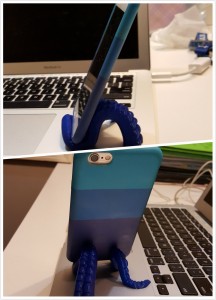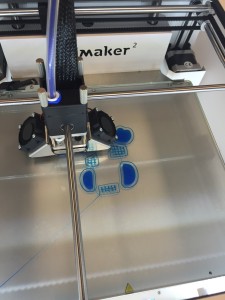What?
It’s great to work with the people from Design for America (DFA) workshop. The DFA involves designers, engineers, artists and business people, collaborating together to come up with the creative solution of social problems. The community formation is very similar to our class, which allowing people who have a variety range of background to work on designing and tailoring technical skills. In the workshop, we were asked to providing a series of solutions that could assist a group of blind people to overcome their current issues as well as meet individual requirements. Kyle, Claire, and Abhiniti and I decided to help a user, a legally blind mother living in Austin, Texas, to know the safety of her children when they are in the playground. In the beginning, we started to make several assumptions about our target, such as her education level, income level, family members, and ages of her children, etc. Next, we brainstormed our individual ideas/solutions for ten minutes without communications. Then, we shared unstructured and initial thoughts within the group and tried to classify the solutions into categories so that we were able to cover other aspects did not consider in the first place. Ultimately, we utilized different materials to transfer thoughts into products. The prototyping process was exciting, flexible and interesting to keep shaping our product until we all satisfied.
So What?
I believe DFA workshop changed my design thinking process. First of all, it is essential for designers or developers to understand specifications and needs before planning. Reasonable assumptions are also indispensable to better help the customers customize their own products since situations vary among different environment. The main purpose of designing products is meeting any demands from the market, but sometimes products are narrowed down their functions in general requirements for maybe 70% t 80% users. However, it is quite important but difficult to have a very comprehensive design to allow more complex and personalized functions adding on them. Therefore, if we want to reach out as many as customers, the initial step should be understanding our targets and experiencing the similar environment. Furthermore, looking back to the making process, I felt a little bit surprised to see several innovative designs from our team and other teams in a short period. There were not restraints for us to develop our ideas so that we were confident in changing our prototypes.
Now What?
A simple design and a small correction of existing design can make a huge impact on individuals and communities. The workshop experience definitely will help my team to apply any thoughts on practical designs. After we choosing the project topic, I will start with researching customer needs, not only the fundamental areas that they expect to achieve, but also the potential demands that might require in the future. I am looking forward to having creative solutions for the surroundings and our society.




